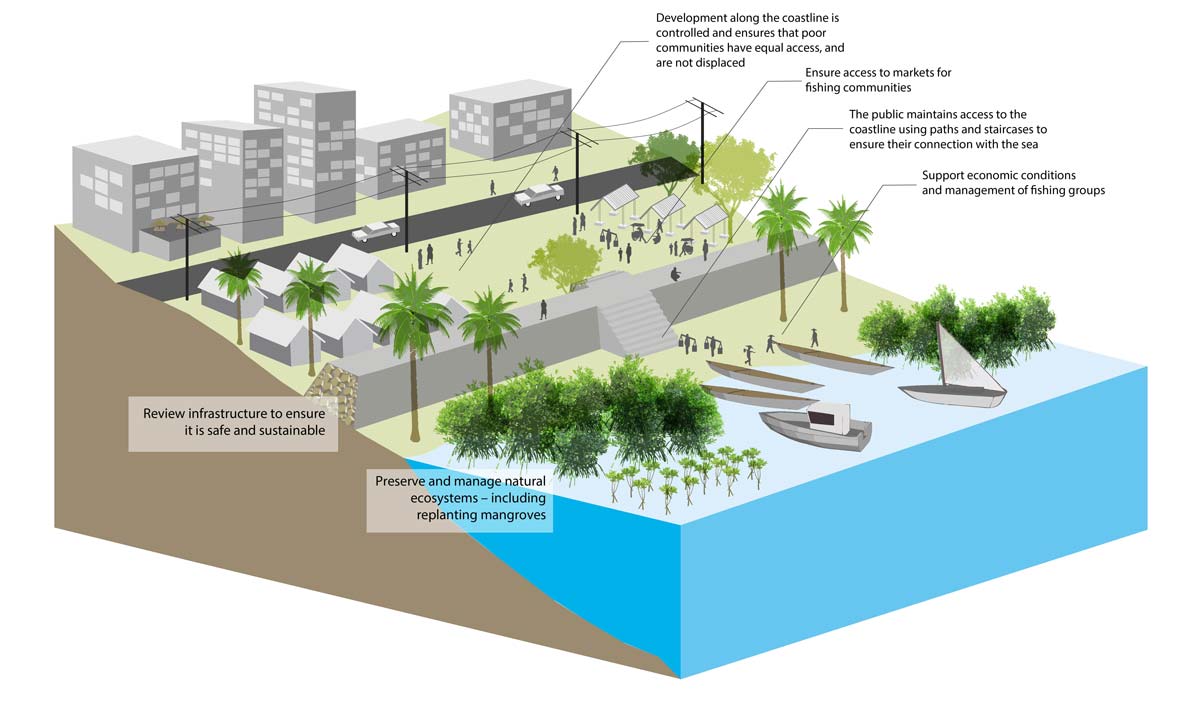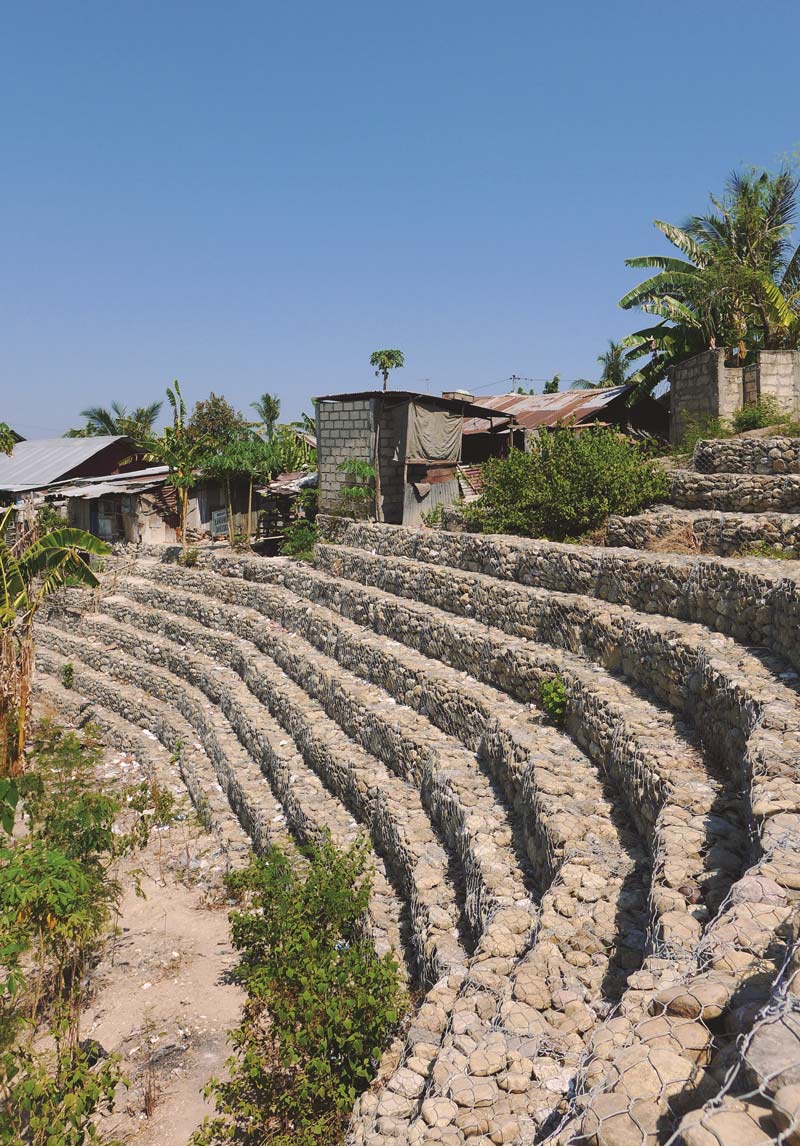Kupang Climate Change Vulnerability Assessment
Kupang, West Timor, East Nusa Tenggara, Indonesia
Kupang is the capital city of the Indonesian province of East Nusa Tenggara, which also includes the large islands of Sumba and Flores while neighboring the separate country of East Timor. As the economic center of the region, the city of Kupang is growing rapidly due to large-scale movement of people from rural areas of Timor as well as neighboring islands, with a population estimated to double in 15 years. This vulnerability assessment proposes both qualitative as well as quantitative approaches to evaluating and identifying vulnerability to climate change in Kupang City. We map and assess different neighborhoods and sectors of the city according to exposure, sensitivity, and vulnerability to different climate-change hazards, as well as their adaptive capacity to adjust to these hazards. We also take a closer look at two representative neighborhoods to evaluate how and why vulnerabilities arise in certain typologies, ending with our recommendations for ways for vulnerability to be reduced through the city’s planning and policymaking mechanisms.
Kupang is a coastal city, so it is perhaps with some irony that some of its greatest climate-change related issues revolve around water. Kupang’s economy is significantly based on the hotel, services, and trade sectors, which are continually growing. However, this development, while attracting visitors and creating jobs, is largely concentrated along the coastline, which is especially vulnerable to climate change. While mangroves used to run along the coast and protect the city against high winds, waves and abrasion, due to this development and to the erosion of the watershed they are significantly depleted.
Water is additionally an issue in Kupang in other respects. Due to Kupang’s geology, ground water is difficult to access, so many people rely on rivers as their source of drinking water. Rivers are threatened by pollution caused by sedimentation, which is often caused by erosion and deforestation of the watershed, as well as from sewage and trash. The successful capture and delivery of water is also problematic, especially in newly developed areas on the periphery and on the surrounding hills, where most poor migrants settle. Farmers, fishermen, laborers are the most vulnerable groups in terms of drought, as they must spend a disproportionate amount of their income to access water.

Water issues, however, are not the only climate-related hazard threatening Kupang: In this assessment, we evaluate and map different areas of the city according to their exposure to increased temperature, sea-level rise, tornadoes, strong winds, abrasion, and drought, as well as secondary impacts of each of the climate change hazards.
We do the same for sensitivity, or the factors that make the impact of climate hazards greater, like poverty, settlement in coastal areas, levels of education, recent influx of migrants, and access to water. Finally, we assess each neighborhood for adaptive capacity, or the ability to adjust to climate change effects to moderate potential damage, including such variables as access to electricity, to health facilities, and to communal insurance cooperatives.
Taking into account exposure, sensitivity, and adaptive capacity, we quantitatively map Kupang’s neighborhoods according to their vulnerability to climate change. Though the unit of the neighborhood is not particularly precise, it does help in terms of understanding how vulnerability can be distributed across the basic administrative unit in Indonesia, the kelurahan (neighborhood). This unit may be helpful in indicating ways for vulnerability to be reduced through the city’s planning and policymaking mechanisms, which act through this administrative unit.
To identify how certain areas become vulnerable, we finally look at two different neighborhood typologies that are exposed to some of the most common hazards. The neighborhoods that are studied in more depth were selected by the City Context workshop participants, and provide case studies in light of the challenges that Kupang faces due to climate change.
